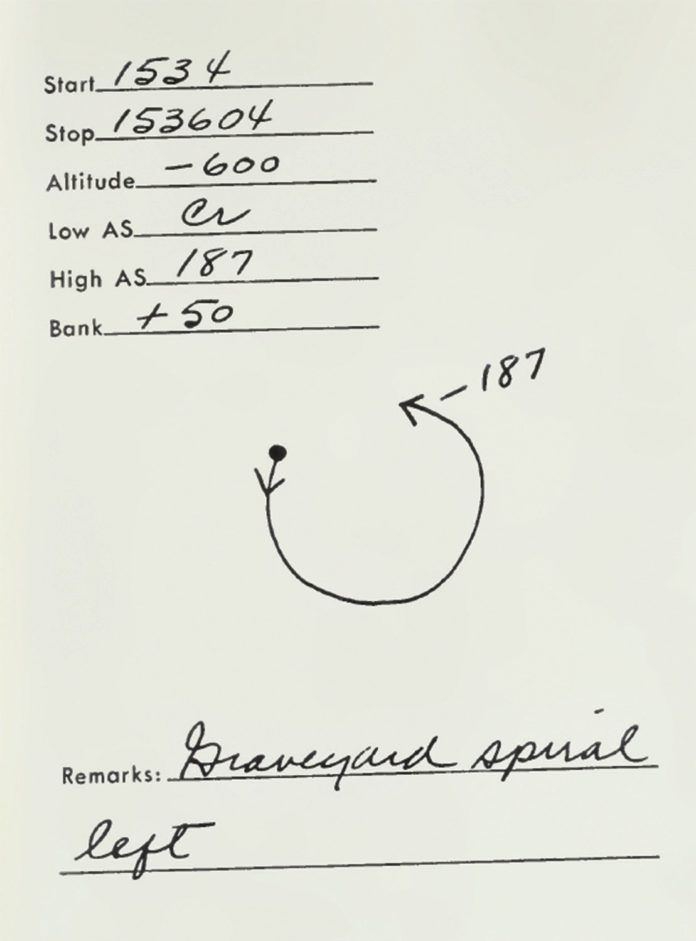
Editor’s Note: A sidebar in Mike Hart’s February 2019 “Losing Orientation” highlighted a 1954 University of Illinois study finding that a non-instrument-rated pilot who inadvertently encounters instrument conditions will last, on average, 178 seconds before losing control. We thought the study deserved some additional scrutiny.
If you’ve been around general aviation for any time at all, by now you should not be surprised to learn that attempted VFR flight into instrument metereological conditions (IMC) and its close cousin, loss of visual references at night, consistently rank as the most lethal type of GA accidents. Although the numbers (thank goodness!) have recently begun to decline, about seven out of every eight—nearly 90 percent—of those accidents are still fatal. That’s largely because, as current NTSB Vice Chairman Bruce Landsberg puts it, they tend to end in flight into terrain, either controlled or (more often) uncontrolled. In both cases, prospects for survival are meager.
Which makes it all the more astonishing that a reliable way to maintain aircraft control while either reversing course or descending through a cloud layer has been known for at least 65 years. It requires no equipment that most airplanes built in the past eight decades don’t already have in the panel—altimeter, airspeed indicator and turn coordinator. It can be learned in three or four hours of dual. And it works.
You might well ask: Why isn’t this being taught today? Well, in a sense it is—and in another, the flight training-safety education complex may have outsmarted itself. (See the sidebar “Where Did It Go?” below.)
Reproduced here are instructor’s notes made during training flights with subject 13. When the study began, this person was 48 years old and held a private certificate.
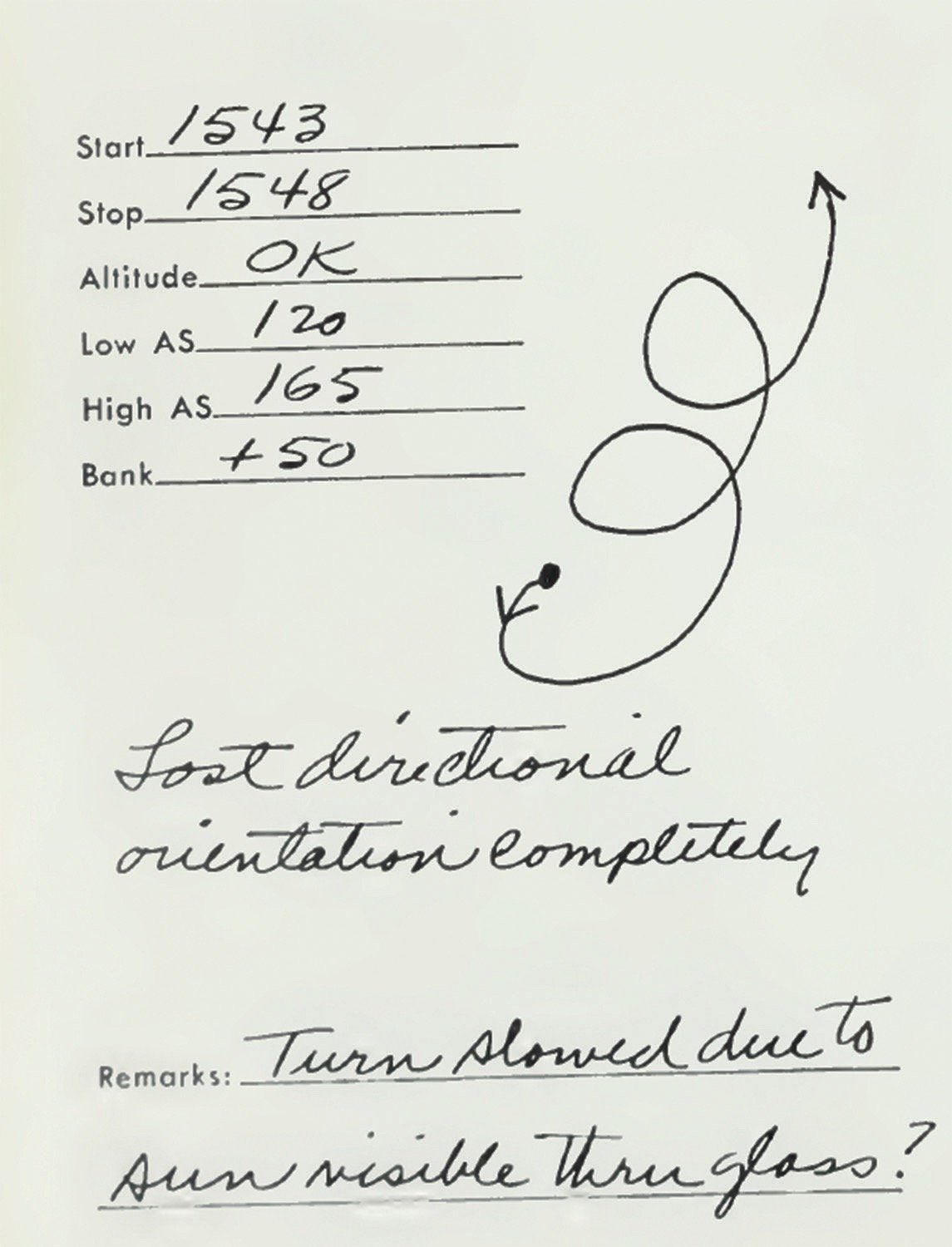
The non-instrument-rated pilot had accrued some 500 hours’ total flight time in an Ercoupe, a Stinson 150 and a Cessna 140. At the beginning of the study, the pilot needed only 124 seconds—far short of the 178-second average—to lose control.
The Problem
The mechanics of spatial disorientation accidents were already well understood in 1954.
Most often, an initial bank that goes unnoticed or uncorrected by the pilot leads the airplane’s nose to drop. The pilot reacts to the increased airspeed with back pressure, tightening the turn and increasing the rate of descent into what was known even then as the “graveyard spiral.” Pilots who avoid an unintended bank are prone to begin overcontrolling as they chase the airspeed indicator and altimeter, falling farther and farther behind the airplane. The resulting series of increasingly violent vertical oscillations (nicknamed “the roller coaster”) eventually overstresses the airframe into structural failure. And the rare pilot who manages to stay straight and level but hasn’t already outclimbed obstructions eventually motors into one.
If the nature of the problem was clear, the remedy was not, particularly since then—no less than now—pilots were prone to human failings like impatience, overconfidence, wishful thinking and “getthereitis.” Adding to the risks were the facts that in 1954 only high-end piston singles—Beech Staggerwings and Bonanzas, Cessna 195s and maybe some Navions and their competitors—were routinely equipped with gyroscopic instruments…while the typical private pilot’s instrument-flying experience was exactly zero.
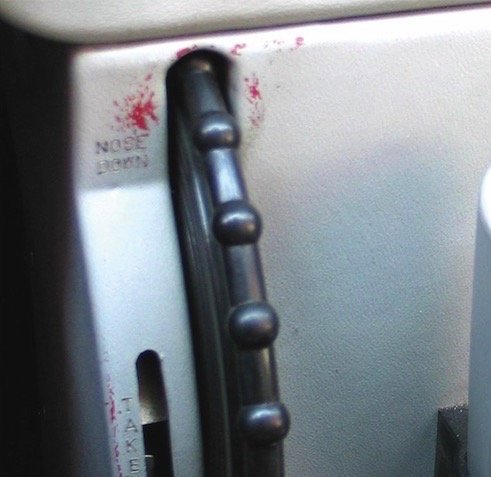
1) Hands off! Seriously. Let go of the yoke. The airplane knows how to fly better than you do.
2) Gear down (if applicable) to reduce the risk of overspeed.
3) Reduce power to a level “somewhat above idling.”
4) Set the trim to the position already identified as maintaining a suitable slow-flight airspeed.
5) Move the prop to high rpm (if applicable), then adjust the throttle to the predetermined setting that will hold altitude at the lower airspeed.
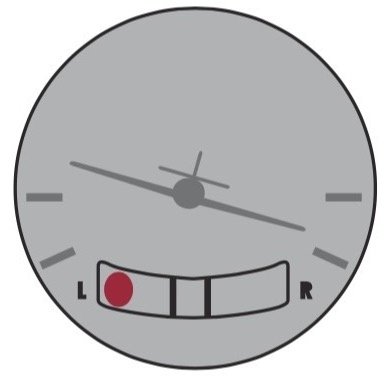
6) Note your compass heading to determine which way is out.
7) Use the rudder to start a turn at three-quarters of standard rate.
8) Time the rollout with appropriate adjustment for the compass’ lead-lag tendencies.
9) Center the turn coordinator needle, note the heading and make gradual adjustments as necessary.
If that doesn’t get you out of the clag within a few minutes, then;
10) Reduce power to another known setting that produces a 300-500 fpm descent. Maintain heading with rudder until you drop out of the clouds into visual conditions.
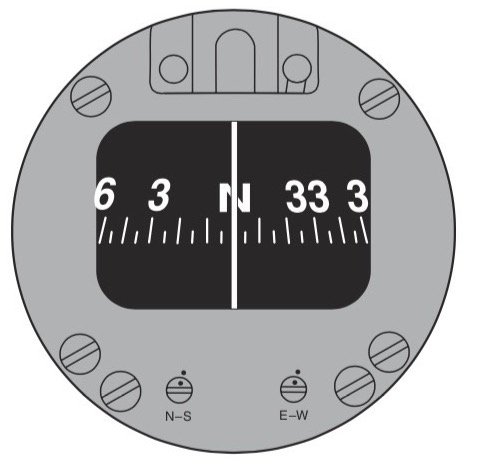
To reduce pilot workload, the prescribed procedure recommends against extending flaps to avoid introducing unnecessary pitching moments and ignores cowl flaps. The technique requires putting in the groundwork to identify—and record appropriately—the desired trim and throttle positions for that specific airplane and practice putting the pieces together. Keeping track of 9-10 steps also suggests use of a checklist: the experimenters taped a typed card to the Bonanza’s panel. But the overhead involved seems reasonable compared to the consequences of getting caught without.
The Project
What was then the AOPA Foundation (later renamed the Air Safety Foundation and now called the Air Safety Institute) gave the University of Illinois Institute of Aviation a grant to “Devise simple, practical curriculum…intended only to teach pilot to keep plane upright if caught on instruments, make good enough 180-degree turn to get back to VFR weather, or get down through cloud deck.” After extensive consultation with an assortment of “expert instrument pilots,” the Institute’s researchers focused on a technique described by Paul Soderlind in a 1951 article for Air Facts. Some revisions to Soderlind’s method were made after flight tests in five models of light aircraft, and the teaching technique was fine-tuned in light of lessons learned while training three pre-test subjects (who were excluded from the final analysis). Finally, a new crop of VFR-only pilots was recruited to evaluate the program in practice.
Readers interested in research methods will note some intriguing differences from current practices. (If you’re not, you can skip the next two paragraphs.) Rather than testing a “typical” configuration, the research team chose to measure their method against the worst case. A V-tailed Beechcraft C35 Bonanza was selected as the test bed specifically because it was “considered representative of the most complex light single-engine airplane normally flown by the nonprofessional, noninstrument pilot. In addition, it was desirable to use an airplane in which the subject had the least amount of experience. In short, the assumption was made that if the subjects, none of whom had soloed a Bonanza, could master the technique in this airplane, they could master it in any single-engine airplane under 3000 pounds gross weight.” The Bonanza was loaded to maximum gross with its CG at the aft limit for all training and evaluation flights.
Their final report makes no mention of any effort to determine sample size based on desired statistical power. Twenty volunteers were ultimately recruited; with all testing carried out in the same airplane, they were probably trained one or two at a time. Addressing their small numbers, the researchers acknowledged that “The Institute would like to have amassed considerably more data and to have spent more time on the project, but the results appeared so conclusive that no purpose would have been served in the interests of aviation safety by a further withholding of results”—foreshadowing the now-widespread practice of terminating studies early to publish results when the evidence of benefit is overwhelming.
The training and evaluation procedure consisted of six sessions per pilot, each involving about 20 minutes of ground instruction and 40 minutes in the airplane. The first challenged them to escape a simulated IMC encounter without specific training—a universally eye-opening experience. The next two flights taught the elements of the escape procedure in a series of discrete steps; flights four and five were devoted to practicing the entire sequence. Flight six graded three simulated IMC recoveries as successful or unsuccessful based on whether the pilot maintained positive aircraft control and avoided unusual attitudes and excessive altitude loss while reversing course. IMC was simulated by covering the airplane’s windows with amber plexiglass, then having the pilot wear non-polarizing blue goggles. The Bonanza’s attitude and heading indicators were also covered.
The Pilots
The twenty volunteers included nineteen private pilots and one student. Only two listed any prior Bonanza time, and none had flown one solo. Career flight experience ranged from 31 hours in three private pilots aged 19, 20, and 25 to 1625 hours accumulated by a 55-year-old private pilot who’d been a pilot “since 1918.” Only three had logged more than 500 hours. None had any prior instrument training.
While 21st-century pilots think of the Piper J-3 Cub as the period’s characteristic trainer, only one-quarter claimed J-3 experience. The most popular models were the Cessna 140 and Aeronca 7AC Champ: Each had been flown by 15 of the 20 pilots, and 14 had flown both. A surprising runner-up was the relatively new Piper Tri-Pacer, listed by nine.
The Results
During the first pre-training exercise, 19 of 20 pilots entered graveyard spirals. The 20th got into an exaggerated nose-high attitude that the instructor recovered before the incipient whip-stall could develop. Elapsed times from donning the goggles to loss of control ranged from 20 seconds to eight minutes, averaging two minutes 58 seconds—the source of the “178 seconds to live” tag line that has since been circulated by aviation agencies around the world and dramatized in a grainy black-and-white documentary. All 20 volunteers agreed that every student pilot’s training should include first-hand experience of the rapid loss of control that follows the loss of visual references.
Eighteen of the 20 completed the program satisfactorily after the planned four training flights. The other two required one additional flight each. In follow-up testing, 59 of 60 recovery attempts were judged successful. One pilot neglected to adjust prop rpm and power (step 5) on his first try, descending below 100 feet agl before the instructor intervened. His next two attempts were good.
The research team also offered an additional flight to try out the volunteers’ own ideas. While all accepted the offer, only two tried anything beyond the Institute’s curriculum. Both attempted to minimize pitch oscillations with elevator pressure and almost immediately released the yoke after recognizing that they were making matters worse.
Hands off, throttle back, retrim and make a gentle turn with rudder: Recoveries increased from zero of 20 to 59 of 60. It worked then, whether in a Cessna 140, a Champ or a Bonanza. Unless the laws of physics have changed, it will still work now.
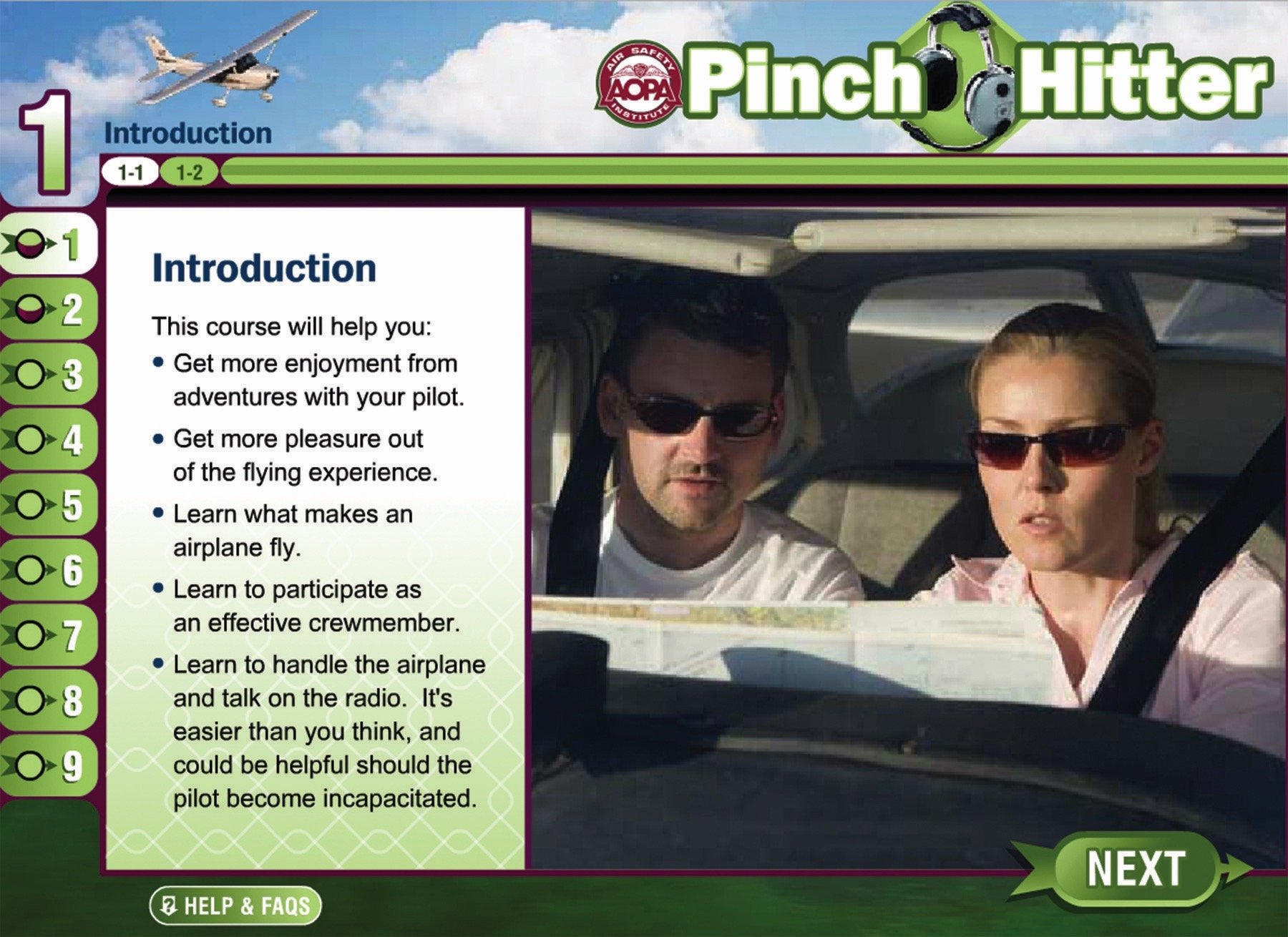
Following instructor training, standardization, and certification, the first 180-Degree Rating Courses were offered to the public in October 1958. Response was enthusiastic, though limited in part by instructor availability. More than 1200 pilots completed the course in the next 18 months. It also became the prototype for other popular training programs, notably the “Pinch-Hitter” courses designed to give non-pilot passengers the basic knowledge and in-cockpit resources needed to land safely if the pilot became incapacitated. Due to regulatory changes (see the sidebar “Where Did It Go?” on the opposite page), the 180-Degree Rating was superseded by a new-and-maybe-improved “360-Degree Rating Course”—that put the pilot’s hands back on the yoke—just three years later.
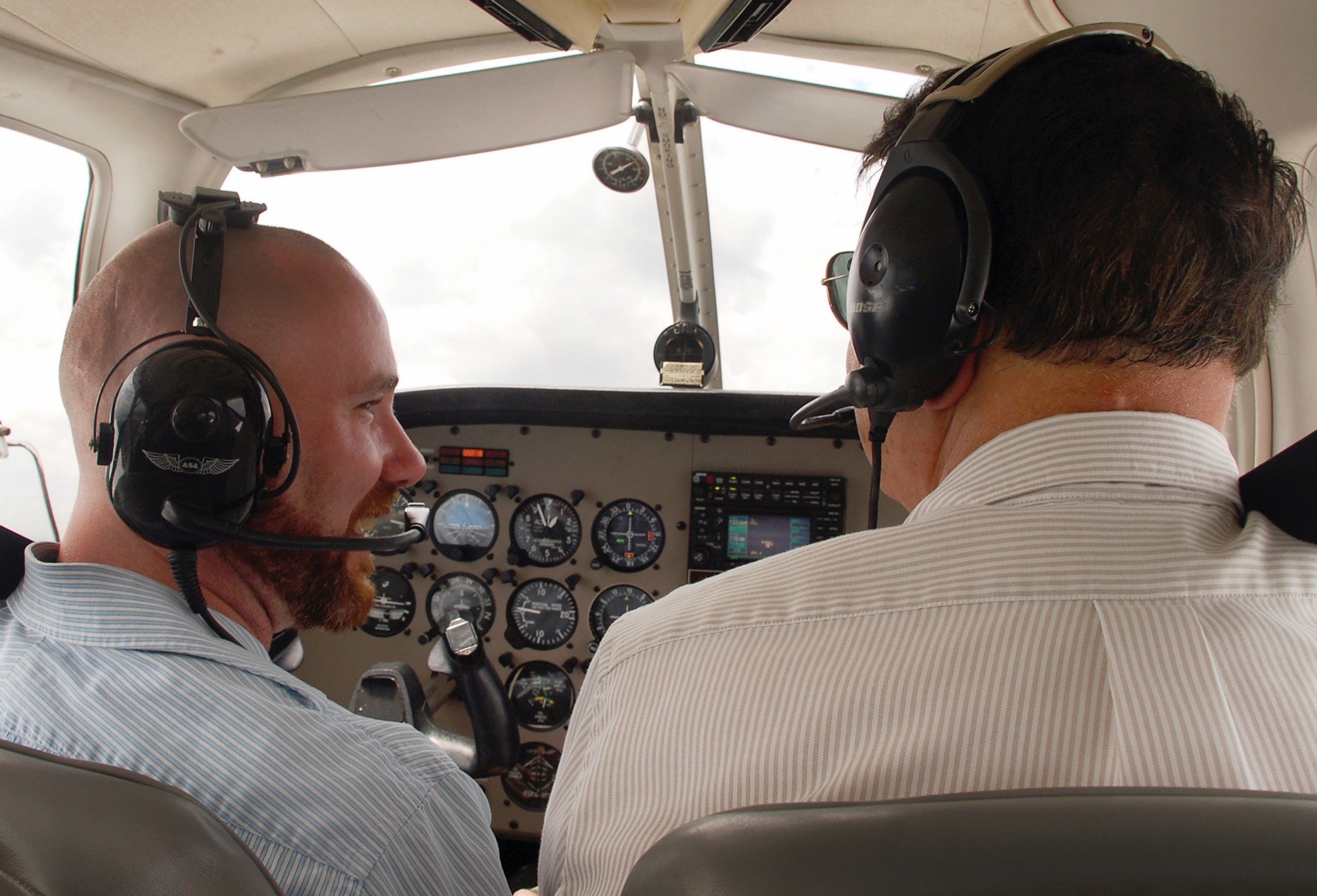
On March 16, 1960—just a year and a half after rollout of the 180-Degree Rating Course—the now-familiar requirement that private pilot candidates receive at least three hours of instrument training took effect. Test standards now call for not just a controlled 180-degree turn but also climbs, descents and turns to headings while using available radio and navigation gear.

Daniele Paolo Scarpazza
While the goal of enabling every pilot to follow ATC vectors is laudable, the adequacy of the mandate is doubtful. Most pilots in the 1954 study learned the escape sequence in about two and a half hours of dual—using a checklist. Is another 30 minutes enough to gain a broader understanding of attitude instrument flying? Without regular practice, can that really be expected to survive until the next flight review? Many IFR pilots who’ve grown rusty between instrument proficiency checks can attest to the perishability of those skills. Might more thorough drilling in a simpler procedure prove more reliable in a crisis?
David Jack Kenny is a fixed-wing airline transport pilot with commercial privileges for helicopters.




Makes sense to me. As a thousand-hour VFR pilot, I have a VFR-into-IMC story, as I’ll bet many others of similar experience do too. I’m not proud of getting into that pickle, but I knew enough to use and trust my instruments and to get myself out of it as quickly as possible with a turn and descent. If I’d lost the vacuum system at the same time, i’d have lacked the skills to recognize or deal with that second emergency and I’d be dead.
The technique described here works even with compromised instruments or a failed vacuum pump. It might even be a safer choice than using instruments in an emergency, given that most VFR pilots’ instrument training does not include any time learning to recognize or deal with partial panel. I’m going to go up and try it in visual conditions, but I’m pretty sure it will work adequately enough to save someone’s bacon.
If you’ve never inadvertently flown into IMC, you can’t completely grasp the panic and complete loss that occurs of any sense of which way is up. It’s very frightening, enough so that some pilots may find themselves struggling to do much more than fight the panic. This technique would be a very valuable thing for such pilots to have in their quiver of emergency tools.